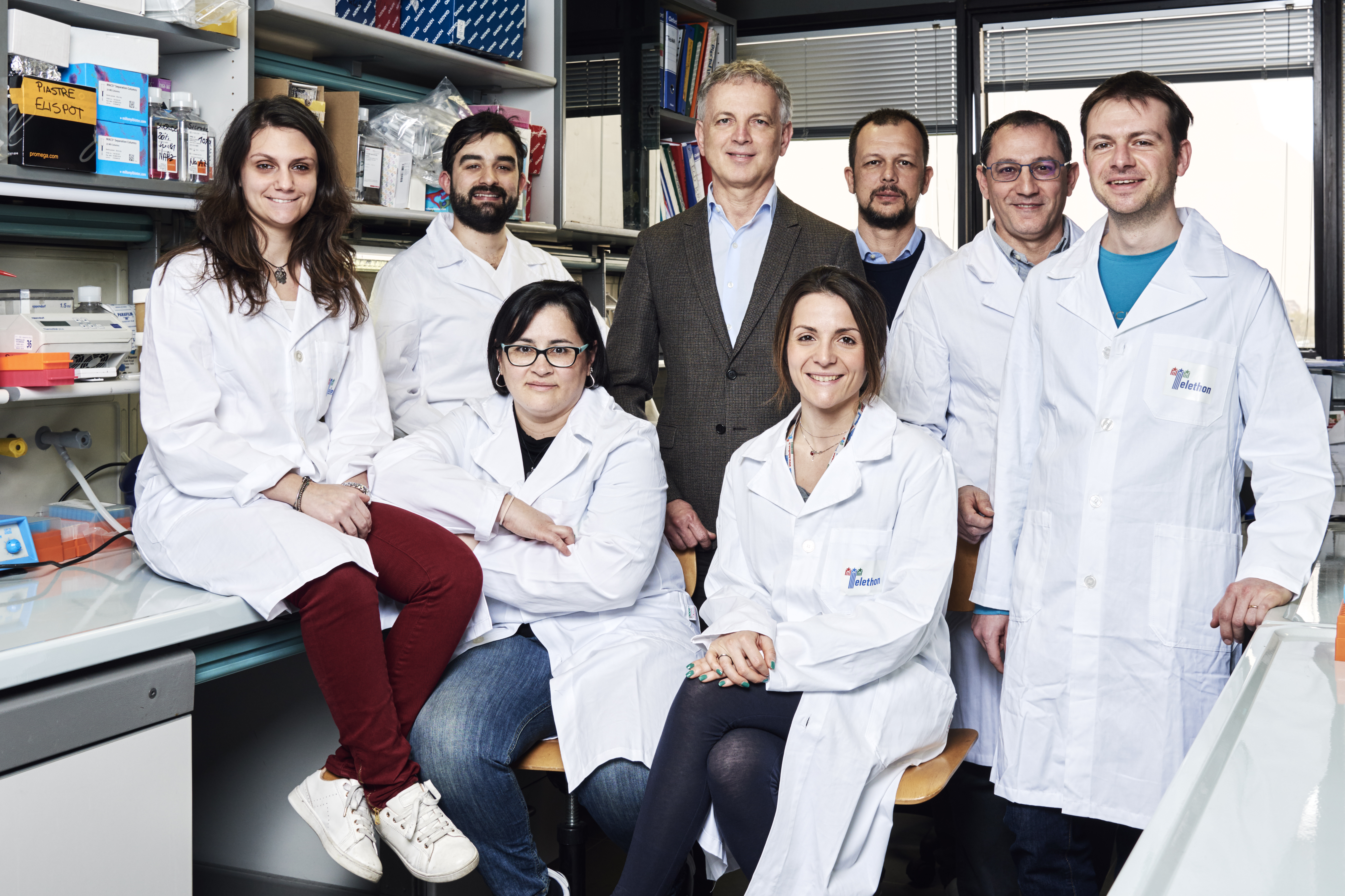News
“Don’t-Eat-Me". Making gene therapy vectors resistant to capture by immune cells
A team of researchers coordinated by Luigi Naldini and Alessio Cantore at the San Raffaele Telethon Institute for Gene Therapy in Milan, Italy, obtained gene therapy vectors that escape capture by virus-clearing immune cells in the liver and spleen and thus allow improved gene delivery to the intended target cells upon administration into the bloodstream. The study provides strong evidence for the safety and enhanced therapeutic potential of this kind of vectors that may be applied in the near future to the treatment of people with hemophilia and other liver diseases. The findings have been published in Science Translational Medicine.
Gene therapy aims at treating diseases with genes, typically by delivering a functional version of the gene mutated in a genetic disease. Transfer of coagulation factor genes to the liver, where they are naturally produced, can restore blood clotting in hemophilia and this is among the most successful examples of gene therapy today. Indeed, a single intravenous administration of a gene transfer vector derived from adeno-associated viruses (AAV) provided clear therapeutic benefits in adults with hemophilia. However, it remains currently challenging to use this vector in pediatric patients because its therapeutic effect will be lost after liver growth. Moreover, many individuals are immune to AAV because of prior exposure to the wild-type virus and thus are not eligible for this type of therapy. In contrast, gene transfer vectors derived from the lentivirus HIV, referred to as lentiviral vectors (LV) are stably maintained following cell divisions in liver growth, thus representing a promising strategy both for pediatric patients and adults for whom AAV gene therapy is not an option.


Luigi Naldini and his lab members at SR-Tiget
“In the past 10 years, we have developed LV for gene transfer to the liver and showed their therapeutic potential in animal models of hemophilia” says co-senior author Alessio Cantore, a scientist at the San Raffaele Telethon Institute for Gene Therapy. “However, we found that the majority of LV after intravenous administration are captured by immune cells during their journey to the liver, thus strongly reducing the efficacy of gene therapy”.
The study from researchers in Milan, Italy, has now shown that there could be a way to overcome this barrier. The team got inspired by the previous discovery of a molecule (named CD47) naturally present on blood cells that protects them from immune cells called macrophages, specialized in “eating” viruses and bacteria (a process referred to as phagocytosis), and its reported application to engineer nanoparticles and viral particles to be resistant to capture. “We have genetically modified the lentiviral vector producer cells – adds Alessio Cantore – so that they incorporate an excess of CD47 “don’t-eat-me” signal on the surface of the vectors, thus obtaining phagocytosis-resistant LV”.
The team in Milan found a way to visualize the fate of these “don’t-eat-me” vectors in the circulation in real time. “We have generated fluorescent versions of these vectors and administered them to mice intravenously” says Michela Milani, the study first author, who conducted this work as part of her PhD thesis. “We then exploited an advanced imaging technique set up at the San Raffaele Institute by the group of Matteo Iannacone, and could observe that when these vectors travel through the liver blood vessels, in contrast to the unmodified parental versions, dramatically escape capture by macrophages”.
“We then went on to generate “don’t-eat-me” LV expressing the human clotting factor IX, the therapeutic vectors for hemophilia B – says Luigi Naldini, senior author of the study and director of the San Raffaele Telethon Institute for Gene Therapy – and tested these vectors, in collaboration with a specialized Center of the University of Nantes, France, in non-human primates, the most challenging but also most relevant animal model in which we are required to test new therapies before moving them to first-in-human trials. We found that “don’t-eat-me” vectors were very well tolerated and much more efficient in reaching liver cells, thanks to their protection from phagocytosis, and could reconstitute the coagulation factor to plasma levels that would be fully therapeutic in hemophilia B patients without relevant signs of toxicity. Overall, these findings provide an important step towards testing LV gene therapy in clinical trials for hemophilia in the near future.”
This work was funded by grants from Italian “Fondazione Telethon”, and a sponsored research agreement with Bioverativ / Sanofi
Michela Milani, Andrea Annoni, Federica Moalli, Tongyao Liu, Daniela Cesana, Andrea Calabria, Sara Bartolaccini, Mauro Biffi, Fabio Russo, Ilaria Visigalli, Andrea Raimondi, Susannah Patarroyo-White, Douglas Drager, Patrizia Cristofori, Eduard Ayuso, Eugenio Montini, Robert Peters, Matteo Iannacone, Alessio Cantore and Luigi Naldini, Phagocytosis-shielded lentiviral vectors improve liver gene therapy in nonhuman primates, Science Translational Medicine, 22 may 2019
